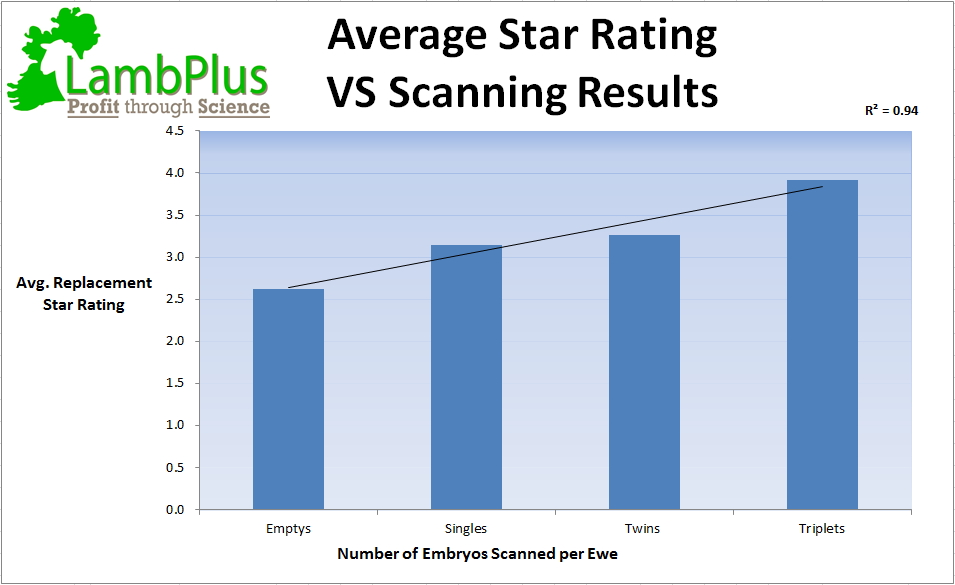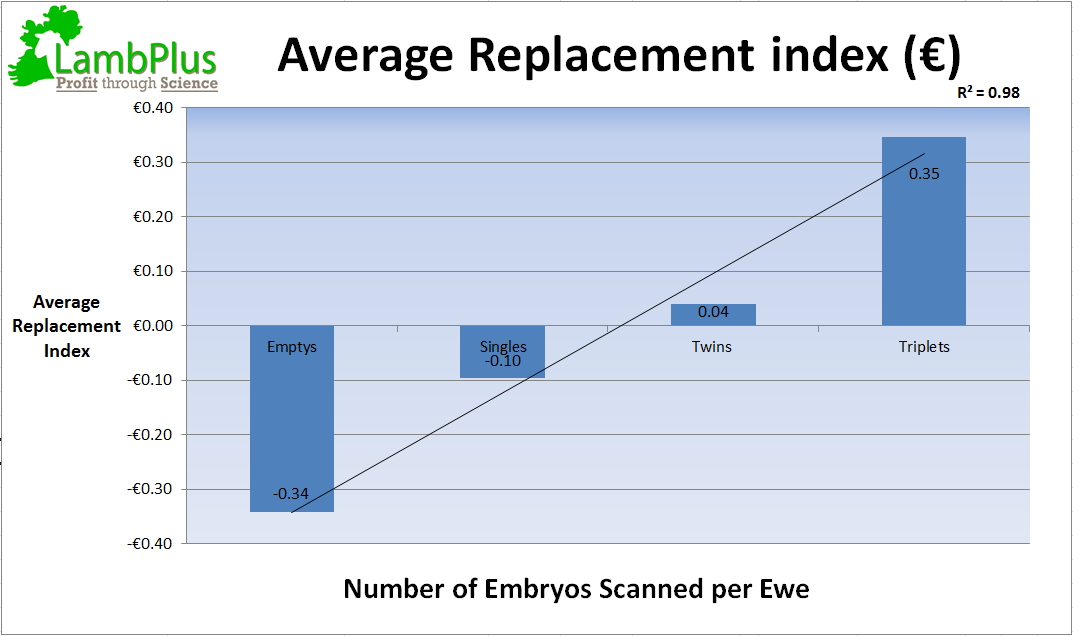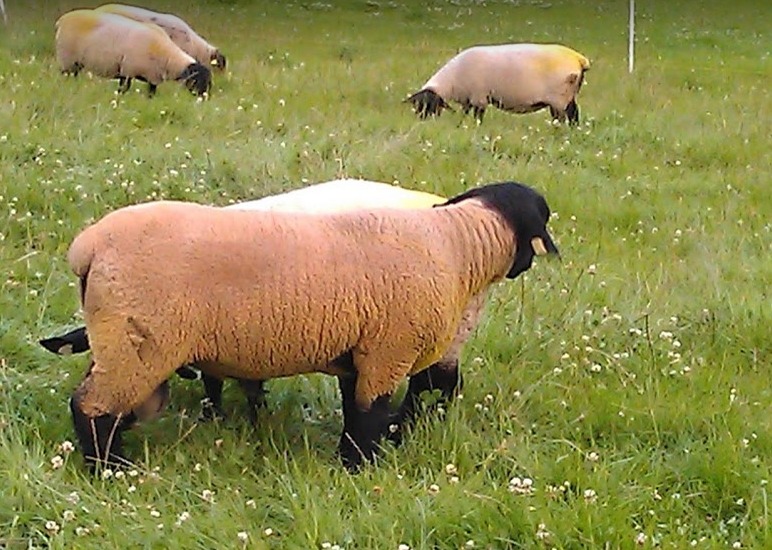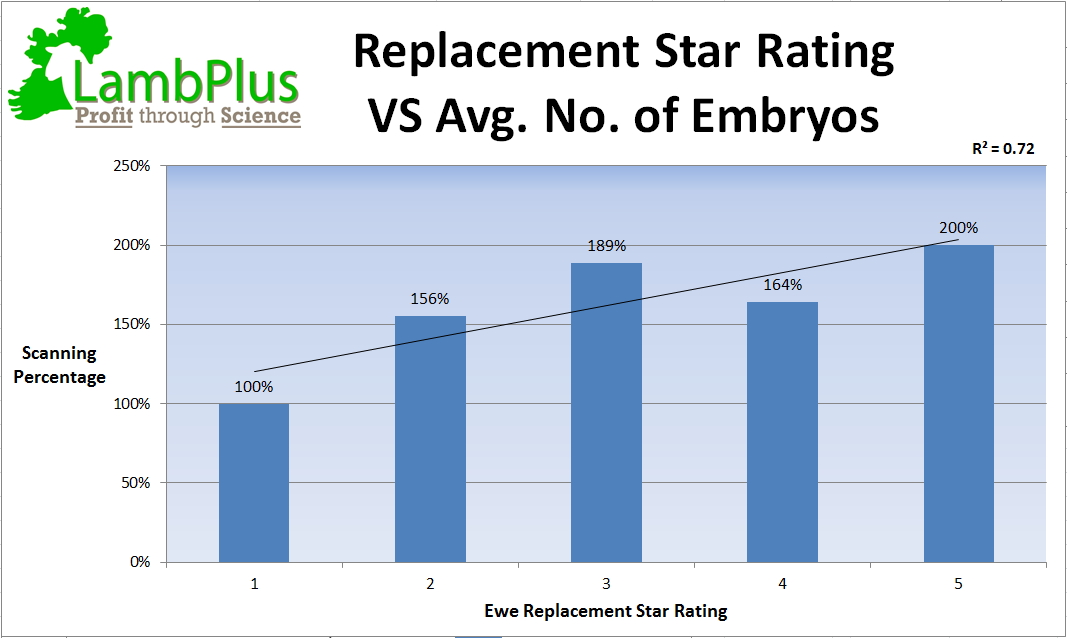Case Study: Richard Moore, Thomastown, Co. Kilkenny; Columbkille Flock
Richard has been breeding Suffolk sheep all his life, his flock was established in 1958 by his father and has been performance recording his flock through LambPlus since it began in 2009. He is an avid believer that genetic indexes (€uroStars) can help to improve his flock’s performance, and perhaps more critically the performance of his ram’s on commercial farms, helping commercial farmers put more money in their pockets.
In this case study we take a look at the pregnancy scanning results for Richards early lambing ewes. There are 53 scans including some ewes, these will be scanned again in January to check for late lambers.
In this first graph we take a look at the effect of the ewes Replacement Star rating on the number of embryos scanned per ewe. The 1 Star ewes were scanned with an average of one lamb per ewe, 5 Star ewes scanned with an average of two lambs per ewe that’s an extra lamb per ewe!!.
This second graph takes a look at what the average Replacement Star rating for the ewes that scanned Empty or with Single, Twin or Triplet lambs respectively. Ewes that scanned empty had an average Replacement Star rating of 2.6 stars whereas the ewes that scanned with Triplets had an average Replacement Star rating of 3.9 stars.
So in this flock the Replacement index is helping to identify the ewes most likely not to conceive as early as their flock mates and also helping to identify the most prolific/fertile ewes.
This third graph is very similar to the second graph, except this time instead of using the Replacement Star rating; we use the Replacement Index figure (which is also displayed in catalogues) as a more precise means of separating the data. In this case there is a €0.69 difference in the ewes scanned with empties and the ewes scanned with triplets and the trend is even more convincing.

Richard commented that “The results are so stark, I have always believed that performance recording was the way to go, but to see these results in black and white for my own ewes just supports how solid the system is”


